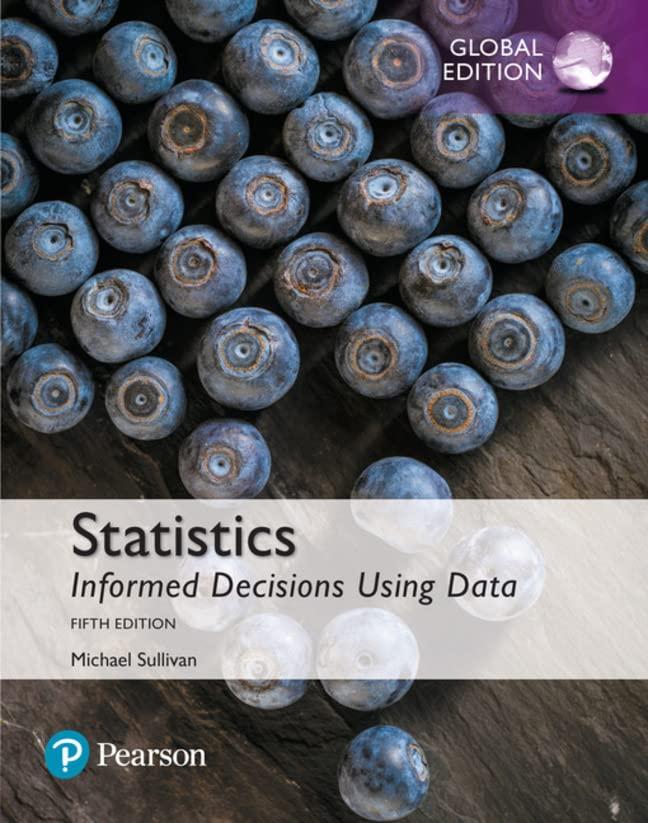Urn I contains seven black and three white balls; urn II contains twelve black, five white, and
Question:
Urn I contains seven black and three white balls; urn II contains twelve black, five white, and six red balls; and urn III contains one black, eight white, and four red balls. Roll a fair die.
If the die is a one, randomly select a ball from urn I. If the die is a two, three, or four, randomly select a ball from urn II. If the die is a five or six, randomly select a ball from urn III.
(a) Determine the probability that the ball is black by drawing a tree diagram.
(b) Determine the probability that the ball is black using the Rule of Total Probability.
(c) If a randomly chosen ball is black, what is the probability that the ball came from urn I?
(d) If a randomly chosen ball is red, what is the probability that the ball came from urn I? urn II? urn III?
Step by Step Answer:

Statistics Informed Decisions Using Data
ISBN: 9781292157115
5th Global Edition
Authors: Michael Sullivan





